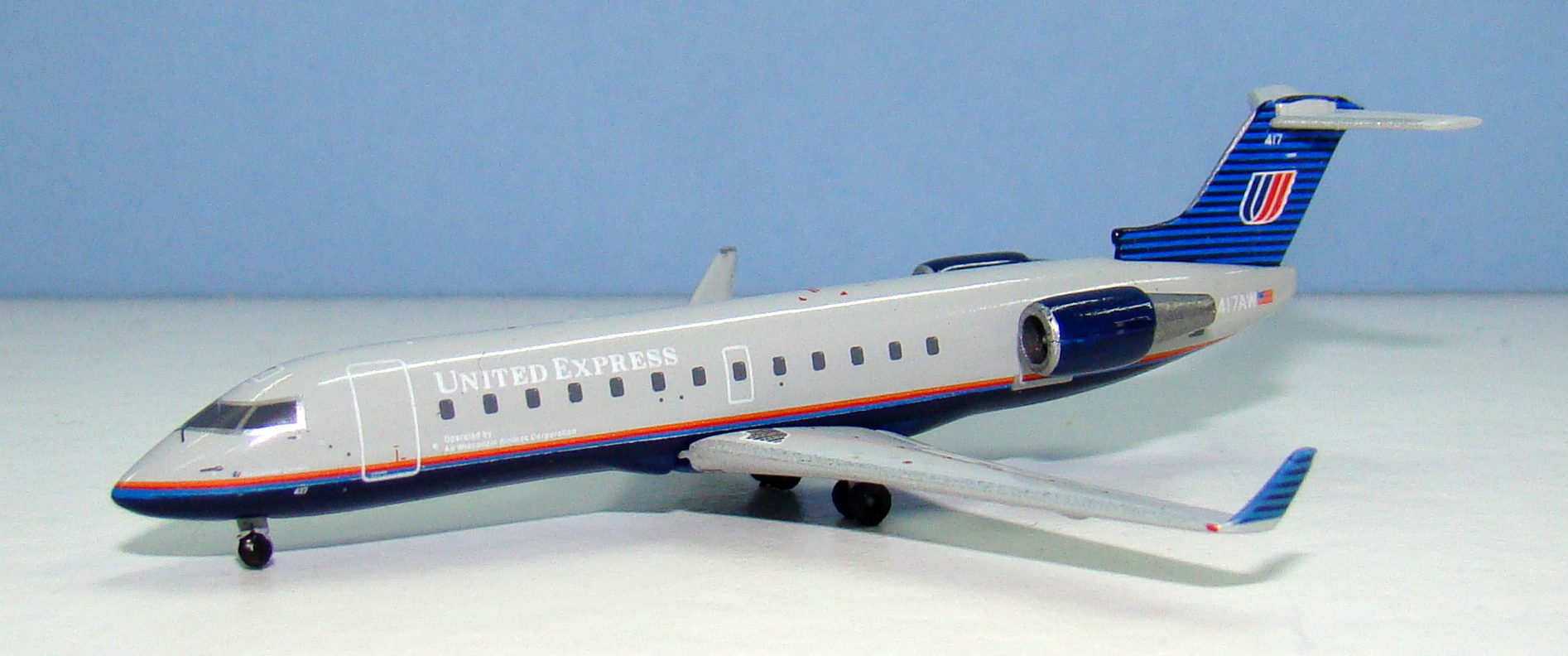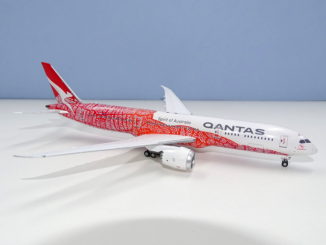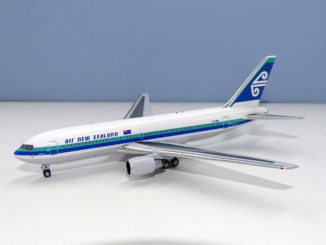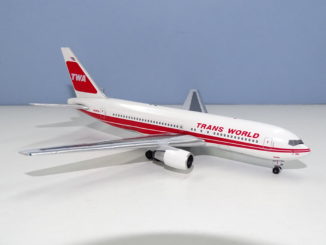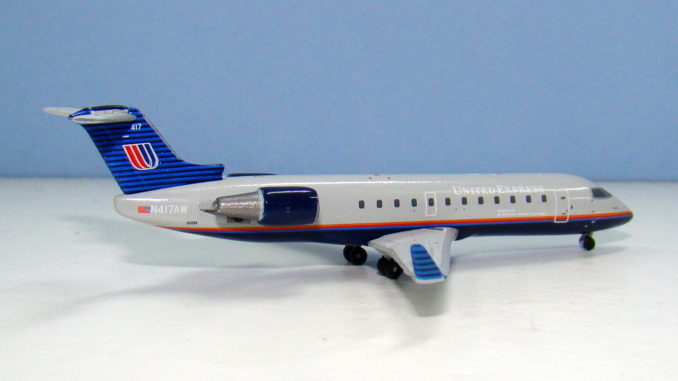
JC Wings and Gemini Jets together have a comprehensive selection of regional aircraft types in their back catalogues. I applaud that they exist and would love to see more use of them, especially for historically significant airlines. It is great to see Gemini remember that there was history before 2010 and this United release depicts an aircraft flying from the early 2000s but in a livery from the 1990s. Hopefully there’ll be more of this kind of release, even if for this particular model I think they’ve rather missed the mark.
THE REAL THING
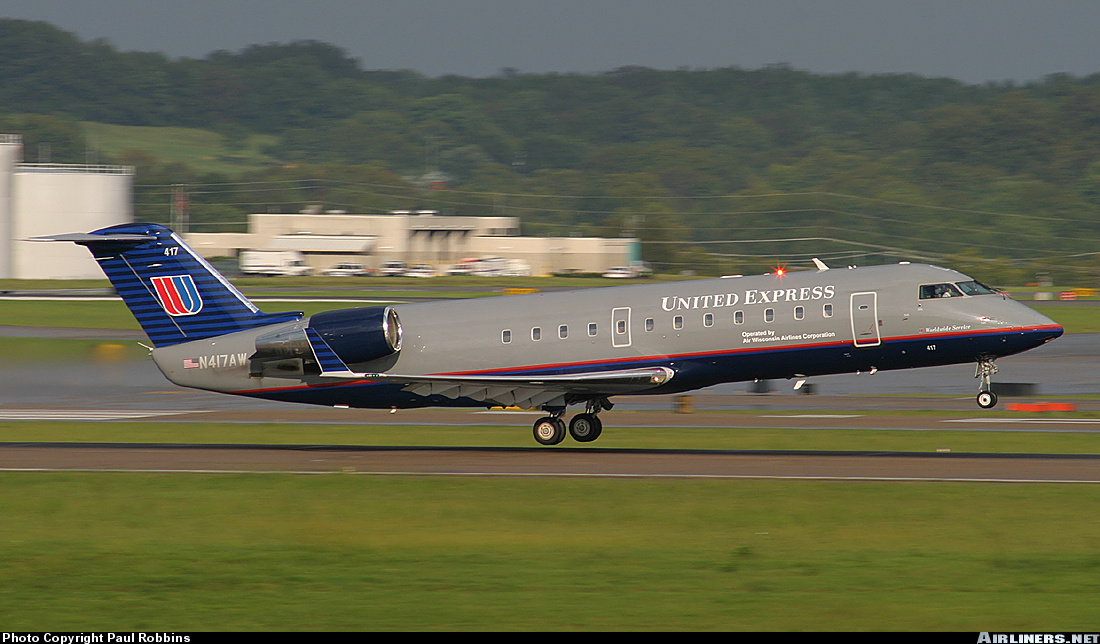
For better or worse the Bombardier CRJ100/200 revolutionised regional air transport. Although there had been some small jets in the past flown by smaller airlines (the F28 and BAE146 mainly) the CRJ offered something that they did not and along with the slightly later Embraer 145 enabled a complete overhaul of RJ fleets and operations in the 1990s. Turboprops were out and sleek little jets were in, to the tune of over 1000 sales for Bombardier.
As RJs began to replace mainline flights and to be operated on longer segments they were never designed for they became the bane of frequent flyers, however at the start they offered a major upgrade in comfort, even if this was at the cost of efficiency. In the past decade the 50 seater RJ has fallen massively out of favour as the price of fuel has increased and larger more efficient RJs have entered the market; accordingly CRJ200 production ceased in January 2006. Despite that the CRJ200’s place in aviation history is assured as one of the most important aircraft of all time.
Air Wisconsin has a long and proud history since 1965 as a pioneer regional operator. It became a United Express carrier in 1986 but the squeezing of margins has had an impact on it and during the 2000s it switched to US Airways and then post-merger found itself flying under the American Eagle banner. Having been an early adopter of the BAE 146 it didn’t become a CRJ operator until fairly late (in 2000) and nowadays finds itself rather stuck with a large fleet of 65 CRJ-200s. Fortunately even with the small CRJs Air Wis has found a role for itself and recently signed once again to fly exclusively for United Airlines. UA service is to start in September 2017 and be exclusive from March 2018 operating from the Chicago and Washington Dulles hubs.
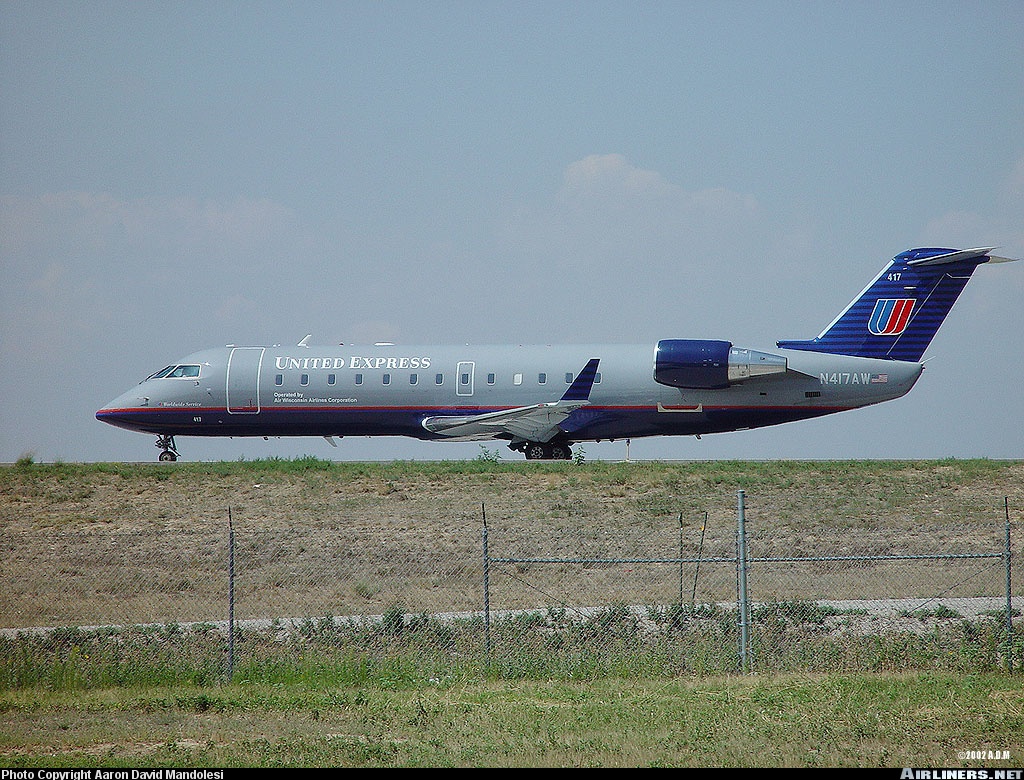
This aircraft, N417AW, joined Air Wisconsin fresh from Bombardier on January 28, 2002 and has flown in United, US Airways and American Eagle colours. She remains in the fleet as of 2017 and is one of the 2nd largest CRJ200 fleets remaining in the USA.
THE MODEL
The format for my reviews is to split them into three key areas:
- The mould of the aircraft
- The paint and livery
- Printing and quality control
Each can get a maximum score of 10 for a section giving a maximum combined total score of 30.
THE MOULD
Gemini Jets first produced a CRJ mould in 2005 (actually on an Air Wisconsin United Express CRJ but in the blue colours). The mould has seen only occasional use (26 models) but recently Gemini has produced 5 or 6 US regional express airline schemes using the mould including this one, which almost counts as a classic! Personally I’d like to see CRJs from the 1990s like Comair but that’s another story.
This mould now resides in the joint Gemini / JC Wings stable and JC have been gradually upgrading a lot of their moulds with antennae. This mould has not been one of those upgraded however, which is a shame especially as the other parts of the mould could do with a big upgrade too.
The fuselage of the mould is actually pretty good. The mould is not seamless and shows its age with a small seam underneath, as it’s a cradle mount, and a tail seam where the horizontal stabilisers are fixed. Nonetheless the shape and proportions in general are correct. The small inlet at the tail root is too elevated but the rest of the vertical stabiliser meets expectations.
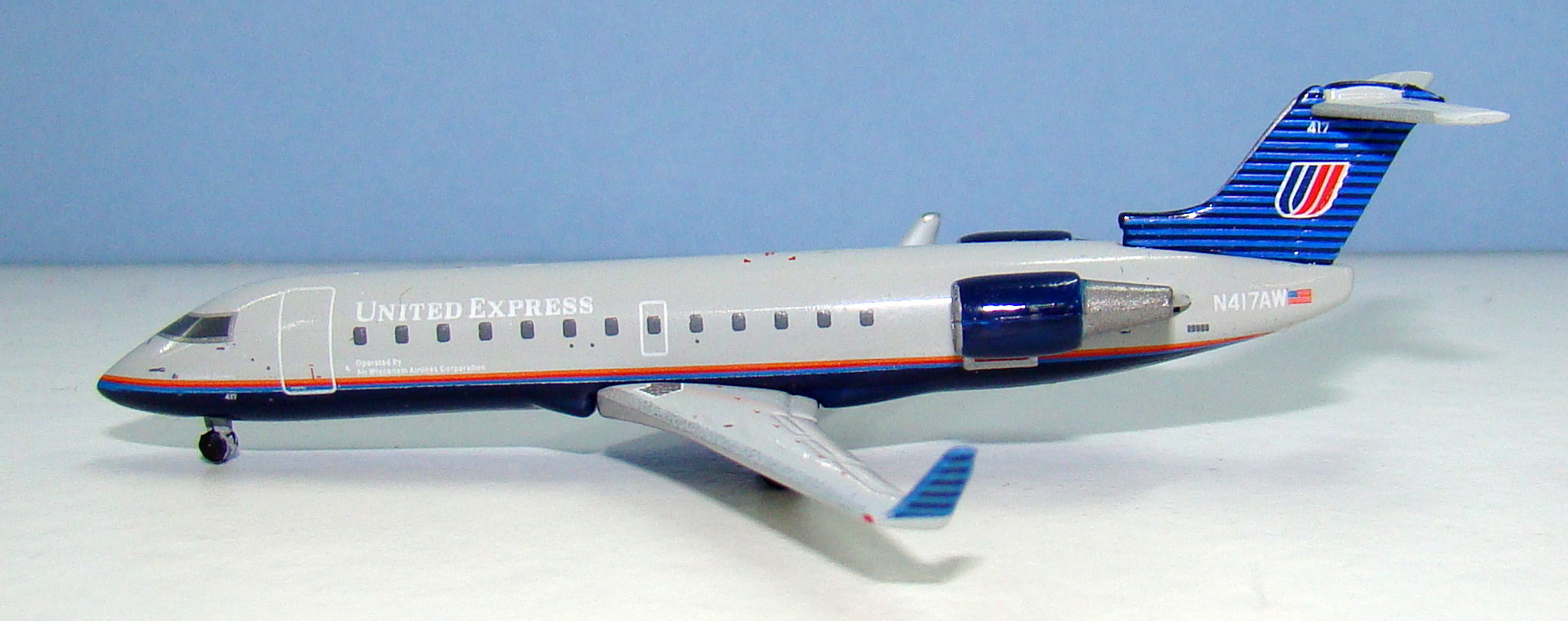
The big issue with the mould is the landing gear. It screams 1999 as it is basically just stalks with tyres attached. There is no detailing really and little in the way of gear doors, plus the tyre hubs are poor. The worst part is that the maingear appears too long and the nosegear too short giving the whole model a nose-down attitude that is not evident in the real thing. The nosegear wheelhubs, or lack of them, is also a problem as they are obvious on the real thing.

Adding aerials to the mould would be nice but what it really needs is new landing gear. If these mods were made this mould would get a decent score (8 maybe) but without the changes the mould can’t get more than a 6. Certainly if you hold the model by the gear, thus obscuring it, the plane looks so much better.
SCORE – 6
PAINT & LIVERY
United’s 1990s colour scheme is commonly known, not entirely complimentarily, as ‘battleship grey’ and replaced the attractive rainbow stripes of the Saul Bass scheme. It was perhaps more business-like but also faded quickly and is to my eye a bit drab. The worst part of the scheme for me was the United tulip, which was reduced in size on the tail too much. In 1/400 scale this livery has been challenging to reproduce as the several colour variations used by different manufacturers show. Being such a large block of colour the primary grey really stands out when it doesn’t match another aircraft in your fleet.
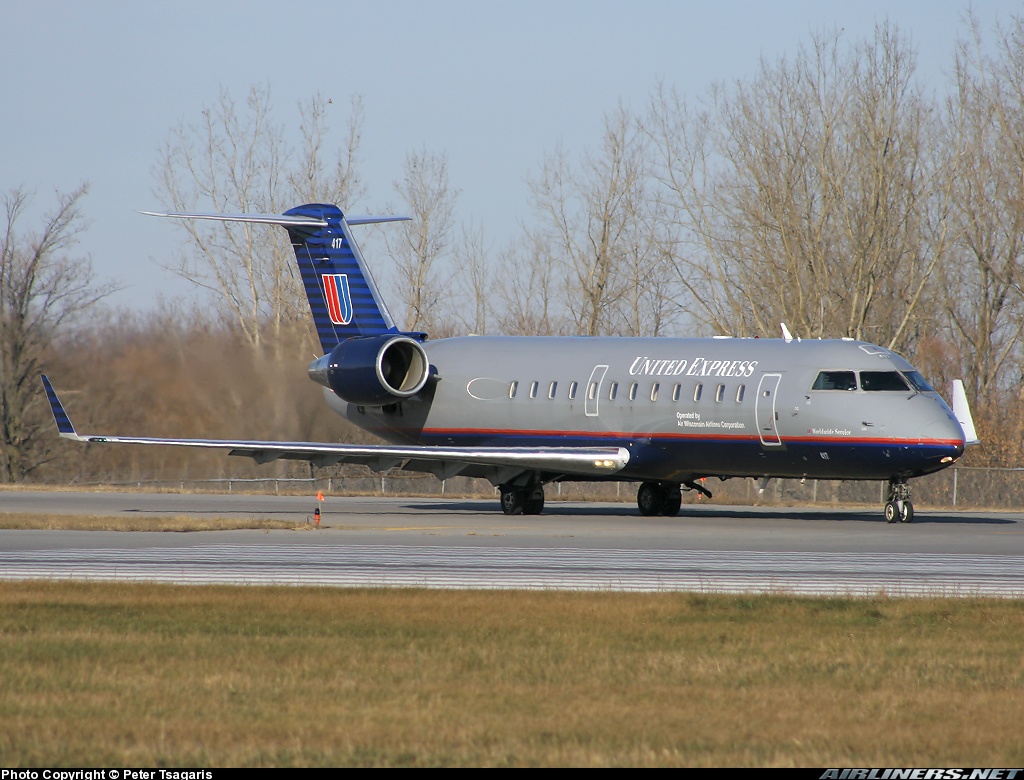
There’s no beating around the bush the fuselage grey colour is way too light. I own battleship grey Boeing 727-200, 747SP and 757-200 made by Gemini Jets and frankly the colours of those don’t match each other, but they are far darker than this CRJ is. Aeroclassics have typically used a lighter grey for this scheme but even my DC-10 made by them is darker than this CRJ. The grey is so light in fact that the white titles and registration rather blend into it when they should stand out really clearly.
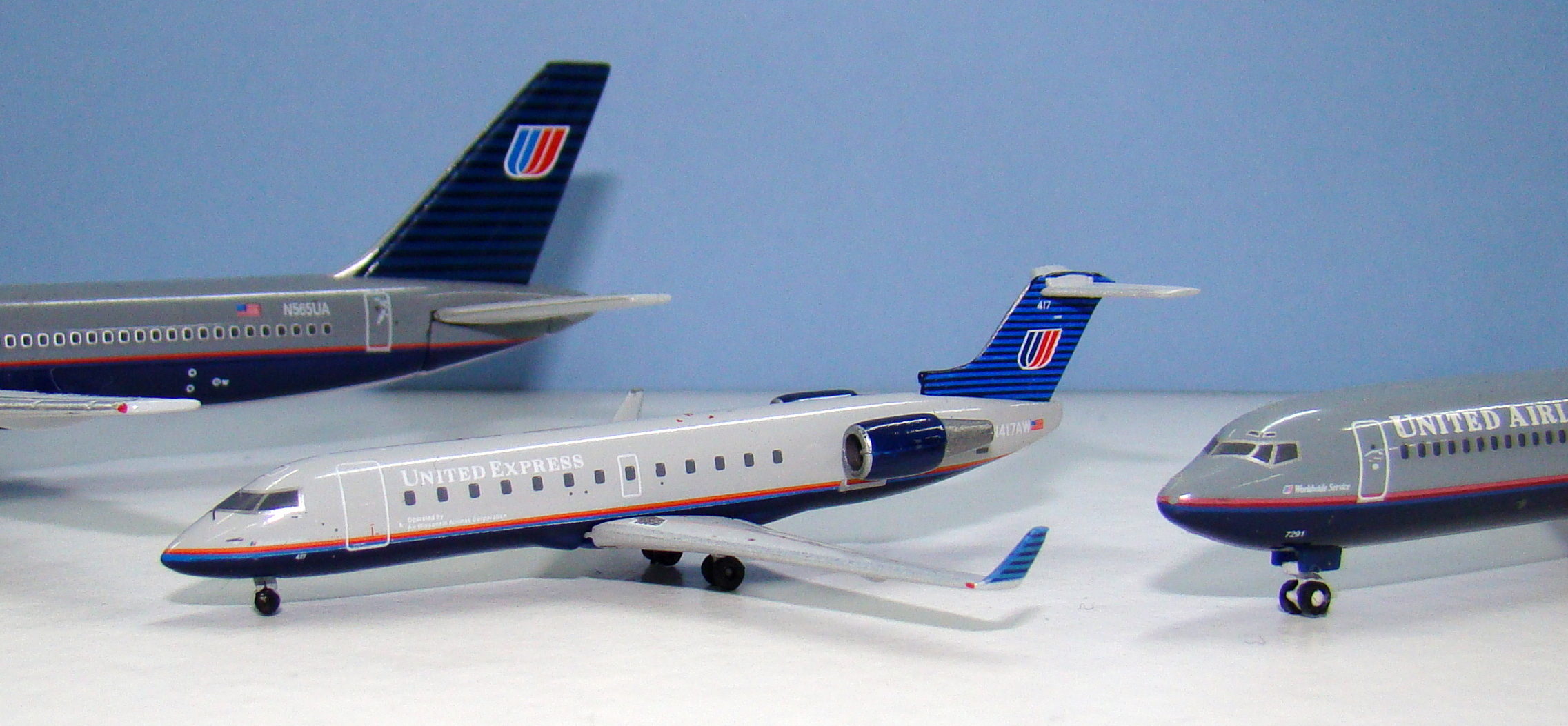
The rest of the colours are fine and the tail is accurate. One other mistake is that although the doors and emergency exits are correctly outlined in white the windows are not. I am usually quite relaxed about colours but in this case the grey is the cornerstone of the livery and is so obviously wrong that the model is significantly weakened. Considering the range of previous Gemini battleship liveried United aircraft this variation is all the more perplexing.
SCORE – 6
PRINTING & QUALITY CONTROL
You might expect that the very small size of this model would impact on the printing quality. I am glad to say that is not the case and the printing quality is very good. Overwing exits, cut here panels, window wipers and the tiny ‘Operated by…’ text are all present and beautifully rendered. The only printing issue I can see is the wing landing lights are too far under the wing leading edge, but this is a very small imperfection.
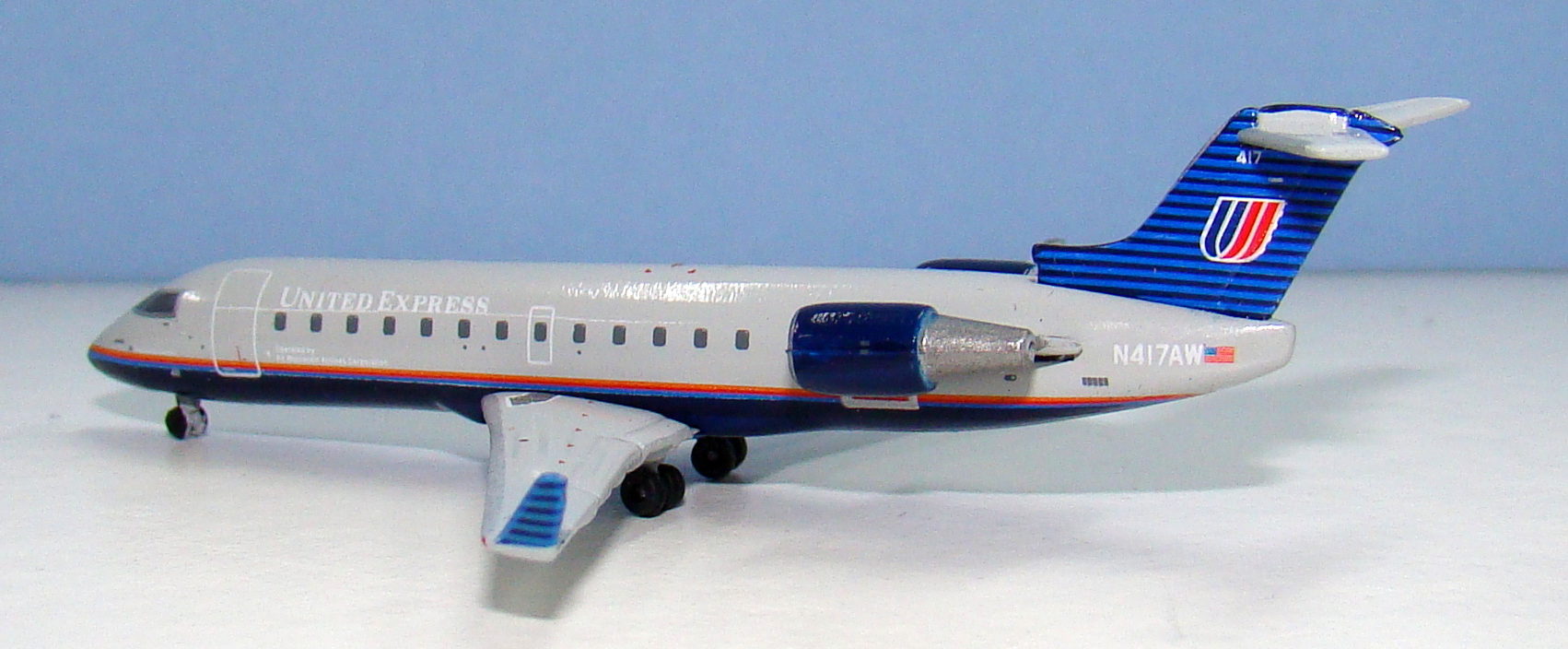
Quality wise you’d expect a small model like this to be put together quite easily and well as any problems will be obvious on such a small mould. The fuselage and wings are all fine, however the landing gear is a little weak again.
From underneath you can see none of the gear is placed perfectly. Given the tiny size of the gear this isn’t a huge problem but at macro photography level the twisting of the nosegear and poor painting of the nose tyres is obvious.
SCORE – 9
CONCLUSION
Producing small 1/400 scale models isn’t easy as any issues are instantly magnified by the small size; having said that this mould is from a different era and sadly the weakest of all JC Wings/Geminis regional selection. The bones of the mould are good but it desperately needs a new set of gear and Gemini need to pay much closer attention to the colours, at least matching them to past versions of the scheme. The decent construction drags this model across the minimum finish line score but it feels like a bit of a hollow victory for a 2017 release.
FINAL SCORE – 21/30


